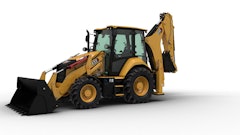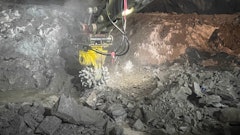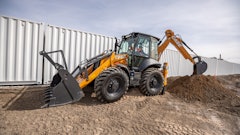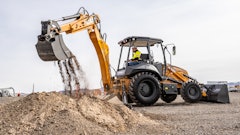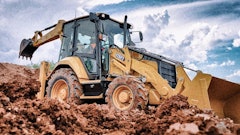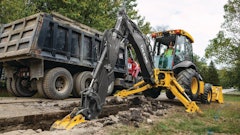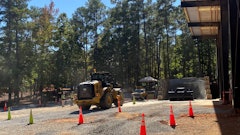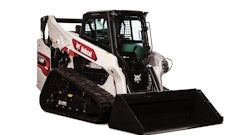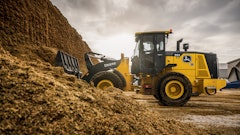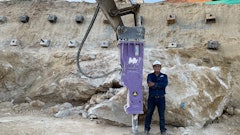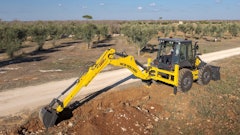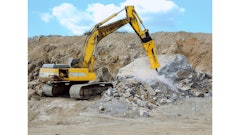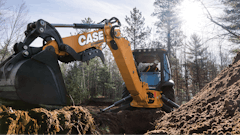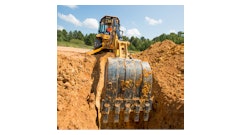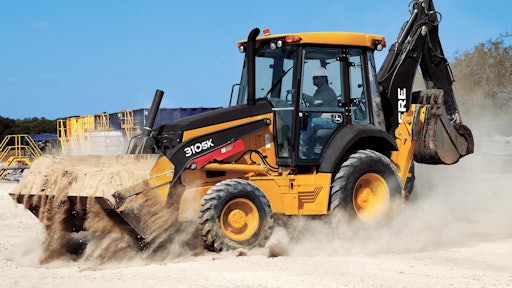
From construction to roadbuilding, utility work to landscaping, backhoes are one of the most popular pieces of equipment across numerous industries.
Their wide range of applications often means backhoes see long hours and demanding tasks. While great from a productivity standpoint, the machines themselves can take a beating. If not properly cared for and maintained, a backhoe can go from productive and valuable to idle and costly.
“But I need my backhoe to operate all day; I can’t be spending hours on maintenance.”
Not to worry. Good preventive maintenance (PM) takes just a few minutes each day - a time investment well spent to ensure this machine experiences as little downtime as possible and remains the productive, hardworking machine it’s designed to be. The following five tips will get you started on the right foot to a solid backhoe PM program. Additionally, consult the operator’s manual for suggested best practices, specific to the machine, as well as to ensure safety while performing all PM activities.
Tip #1: Look It Over
At the start of each workday, do a quick machine walk-around to make sure everything looks good, there’s no build-up of mud or dirt on any moving components, and any excess debris is cleaned off.
An example of a daily, 5-step checklist might include looking for:
- Bucket teeth damage
- Cracked or broken hoses
- Leaks
- Inadequate tire pressure
- Loose bearing bushings, pins and bolts
Any issue, even one that seems small, should be addressed immediately. Not only will this prevent minor issues from escalating into major ones, it’s the best way to avoid potential – and costly – downtime down the road.
Tip #2: Examine the Engine
The engine is the powerhouse of the backhoe so it needs dedicated attention, both on a daily and less-frequent basis.
At the start of each day, check to be sure there’s no debris buildup in the cooling system. Also, look for signs of condensation in the fuel tank, as this can damage the fuel and possibly the engine itself.
While not a daily task, the air filter should be checked and cleaned or changed as-needed. Backhoes that operate in highly dusty or dry environments need their air filter attended to more frequently than those that don’t. A good practice is to check the air filter weekly and clean when dust and dirt build-up becomes noticeable. An air filter should always be replaced if it’s damaged or dirty beyond the point of cleaning, otherwise a good rule of thumb is to replace quarterly or semi-annually for backhoes that operate in more demanding conditions, and semi-annually or annually in less-demanding environments (depending on total hours and use).
Similar to the air filter, the engine’s fuel filter doesn’t need to be checked daily but working it into a regular PM program is the best way to spot an issue early on, before problems begin. When in doubt, refer to the backhoe operator’s manual for recommendations specific to the machine.
Tip #3: Check All Fluids
Probably the most obvious part of any equipment PM program is ensuring adequate fluid levels. A checklist of five fluids to monitor on a daily basis should include:
- Oil
- Fuel
- Hydraulic fluid
- Antifreeze/Coolant
- Diesel Exhaust Fluid (DEF)
Refill fluids, as necessary. If oil or fuel contamination is detected, change the fluid and immediately discard the bad fluid in a responsible, approved manner.
Tip #4: Grease Crucial Points
A backhoe has several moving parts, making grease an important, daily PM point. Areas like the front axle, trunnion bearings, and swing system pins and bearings should be checked daily and greased if required.
Always use high-quality grease to ensure it’s capable of standing up to a full day in the dirt. Also, choose grease that’s appropriate for the temperature variances where the machine is operating.
While many operators apply grease at the beginning of the day, it’s actually a good habit to get into at the end of the day. A machine is more receptive to grease when it’s warm after a full day of operation vs. cold before it has been started for the day. That being said, it’s never a bad time to apply grease to crucial points so as long as it’s being done on a daily basis.
Tip #5: Write It Down
Like any good company initiative, a PM program must be documented and tracked to gauge effectiveness and identify weak spots in the program that can be improved.
A backhoe maintenance log should be kept, including machine hours to maintenance intervals. Assigning one employee to own the task of keeping the maintenance log will ensure tracking is done consistently, both in terms of frequency and detail of entries.
PM to Payback
Though it may seem like a significant undertaking, a good PM program only needs to take a few minutes each day, and pays back a big return on that time investment. These five steps are a great starting point for a solid backhoe-loader maintenance program. Always consult the operator’s manual if you’re ever unsure of maintenance intervals, and to be sure PM is taken care of properly and in a safe manner.








